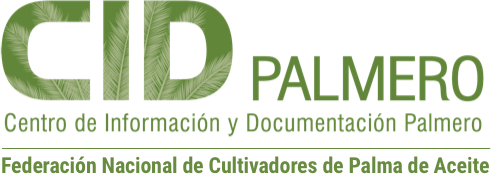A Sustainable Reuse of Agro-IndustrialWastes into Green Cement Bricks

Disponible aquí Disponible aquí Disponible aquí Disponible aquí Disponible aquí Disponible aquí Disponible aquí Disponible aquí Disponible aquí Disponible aquí Disponible aquí Disponible aquí Disponible aquí Disponible aquí Disponible aquí Disponible aquí Disponible aquí Disponible aquí Disponible aquí Disponible aquí Disponible aquí Disponible aquí Disponible aquí Disponible aquí Disponible aquí Disponible aquí Disponible aquí Disponible aquí Disponible aquí Disponible aquí Disponible aquí Disponible aquí Disponible aquí Disponible aquí Disponible aquí Disponible aquí Disponible aquí Disponible aquí Disponible aquí Disponible aquí Disponible aquí Disponible aquí Disponible aquí Disponible aquí Disponible aquí Disponible aquí Disponible aquí Disponible aquí Disponible aquí Disponible aquí Disponible aquí Disponible aquí Disponible aquí Disponible aquí Disponible aquí Disponible aquí Disponible aquí Disponible aquí Disponible aquí Disponible aquí Disponible aquí Disponible aquí Disponible aquí Disponible aquí Disponible aquí Disponible aquí Disponible aquí Disponible aquí Disponible aquí Disponible aquí Disponible aquí Disponible aquí Disponible aquí Disponible aquí Disponible aquí Disponible aquí Disponible aquí Disponible aquí Disponible aquí Disponible aquí Disponible aquí Disponible aquí Disponible aquí Disponible aquí Disponible aquí Disponible aquí Disponible aquí Disponible aquí Disponible aquí Disponible aquí
Author
Quan Chin, Wei
Huei Lee, Yeong
Amran, Mugahed
Fediuk, Roman
Vatin, Nikolai
Hong Kue, Ahmad Bengh
Lee, Yee Yong
Estadisticas
Publicación:
Palmas; Vol. 44 Núm. 2 (2023); 80-103
2744-8266
Palmas; Vol. 44 Núm. 2 (2023); 80-103
2744-8266
Abstract
The fabrication of bricks commonly consumes relatively high natural resources. To reduce the carbon footprint in the brick production industry, repurposing industrial wastes in the making of sustainable bricks is a recent trend in research and application. Local wastes, such as oil palm shell (OPS), palm oil fuel ash (POFA), and quarry dust (QD), are massively produced annually in the palm oil-exporting countries. Moreover, QD from mining industries is hazardous to both water and airquality. For better waste management in marching towards sustainability, these wastes should be given their second life as construction materials. Therefore, this paper investigates the possibility of incorporating agro-industrial wastes into the brick mixture by examining their properties by means of several standardized tests. For the mix design, a 100% replacement of coarse aggregate with OPS, 20% replacement of cement with POFA, 20% cement weight of limestone as admixture, and 0 to50% replacements of fine aggregate with QD are experimentally considered. The optimum mix of these wastes is preliminarily determined by focusing on high compressive strength as an indicator. Other examinations include splitting tensile, flexural strength, water absorption, and efflorescence tests. Although the agro-industrial waste cement brick is 18% lower in the strength to weight ratio compared to that of conventional, it is observed that it has better late strength development dueto its POFA pozzolanic properties. Moreover, the proposed green cement brick is further checked for compliance with several standards for feasible use in the construction industry. Financially, the cost for the brick with the new mix design is almost equivalent to that of conventional. Hence, this green cement brick is reasonable to be employed in the construction industry to promote material sustainability for better waste management. La fabricación de ladrillos suele consumir una cantidad relativamente alta de recursos naturales. Para reducir la huella de carbono en la industria de producción de ladrillos, la reutilización de residuos industriales en la fabricación de ladrillos sostenibles es una tendencia que se comenzó a investigar y aplicar recientemente. Año tras año, los países exportadores de aceite de palma producen grandes cantidades de residuos locales, como la cáscara de palma de aceite (OPS, por sus siglas en inglés), la ceniza de combustible de aceite de palma (POFA, por sus siglas en inglés) y el polvo de cantera (QD, por sus siglas en inglés). El QD de las industrias mineras también es peligroso para la calidad del agua del aire. Para una mejor gestión de los residuos en búsqueda de la sostenibilidad, estos residuos deben tener una segunda vida como materiales de construcción. Por lo tanto, este artículo investiga la posibilidad de incorporar residuos agroindustriales en la mezcla de ladrillos mediante el análisis de sus propiedades y realizando varias pruebas estandarizadas. Para el diseño de la mezcla se consideran experimentalmente un reemplazo del 100 % del agregado grueso con OPS, un reemplazo del 20 % del cemento con POFA, 20 % del peso de cemento de piedra caliza como mezcla y un reemplazo del 0 al 50 % del agregado fino con QD. La mezcla óptima de estos residuos se determina preliminarmente centrándose en la alta resistencia a la compresión como indicador. Otros análisis incluyen la resistencia a la rotura, la tracción y la flexión, la absorción de agua y las pruebas de eflorescencia. Aunque el ladrillo de cemento hecho con residuos agroindustriales tiene una relación de resistencia a peso 18 % más baja en comparación con el ladrillo convencional, se observa que tiene un mejor desarrollo de resistencia tardía debido a las propiedades puzolánicas de la POFA. Además, se verificó que el ladrillo de cemento ecológico propuesto cumpliera con varias normas para su uso viable en la industria de la construcción. En términos financieros, el costo del ladrillo con el nuevo diseño de mezcla es casi equivalente al del convencional. Por lo tanto, es razonable emplear este ladrillo de cemento ecológico en el sector de la construcción para promover la sostenibilidad de los materiales y mejorar la gestión de los residuos.
The fabrication of bricks commonly consumes relatively high natural resources. To reduce the carbon footprint in the brick production industry, repurposing industrial wastes in the making of sustainable bricks is a recent trend in research and application. Local wastes, such as oil palm shell (OPS), palm oil fuel ash (POFA), and quarry dust (QD), are massively produced annually in the palm oil-exporting countries. Moreover, QD from mining industries is hazardous to both water and airquality. For better waste management in marching towards sustainability, these wastes should be given their second life as construction materials. Therefore, this paper investigates the possibility of incorporating agro-industrial wastes into the brick mixture by examining their properties by means of several standardized tests. For the mix design, a 100% replacement of coarse aggregate with OPS, 20% replacement of cement with POFA, 20% cement weight of limestone as admixture, and 0 to50% replacements of fine aggregate with QD are experimentally considered. The optimum mix of these wastes is preliminarily determined by focusing on high compressive strength as an indicator. Other examinations include splitting tensile, flexural strength, water absorption, and efflorescence tests. Although the agro-industrial waste cement brick is 18% lower in the strength to weight ratio compared to that of conventional, it is observed that it has better late strength development dueto its POFA pozzolanic properties. Moreover, the proposed green cement brick is further checked for compliance with several standards for feasible use in the construction industry. Financially, the cost for the brick with the new mix design is almost equivalent to that of conventional. Hence, this green cement brick is reasonable to be employed in the construction industry to promote material sustainability for better waste management.
Disponible aquí Disponible aquí Disponible aquí Disponible aquí Disponible aquí Disponible aquí Disponible aquí Disponible aquí Disponible aquí Disponible aquí Disponible aquí Disponible aquí Disponible aquí Disponible aquí Disponible aquí Disponible aquí Disponible aquí Disponible aquí Disponible aquí Disponible aquí Disponible aquí Disponible aquí Disponible aquí Disponible aquí Disponible aquí Disponible aquí Disponible aquí Disponible aquí Disponible aquí Disponible aquí Disponible aquí Disponible aquí Disponible aquí Disponible aquí Disponible aquí Disponible aquí Disponible aquí Disponible aquí Disponible aquí Disponible aquí Disponible aquí Disponible aquí Disponible aquí Disponible aquí Disponible aquí Disponible aquí Disponible aquí Disponible aquí Disponible aquí Disponible aquí Disponible aquí Disponible aquí Disponible aquí Disponible aquí Disponible aquí Disponible aquí Disponible aquí Disponible aquí Disponible aquí Disponible aquí Disponible aquí Disponible aquí Disponible aquí Disponible aquí Disponible aquí Disponible aquí Disponible aquí Disponible aquí Disponible aquí Disponible aquí Disponible aquí Disponible aquí Disponible aquí Disponible aquí Disponible aquí Disponible aquí Disponible aquí Disponible aquí Disponible aquí Disponible aquí Disponible aquí Disponible aquí Disponible aquí Disponible aquí Disponible aquí Disponible aquí Disponible aquí Disponible aquí Disponible aquí Disponible aquí


